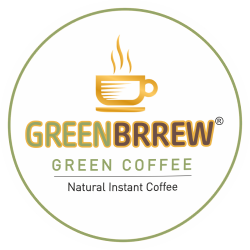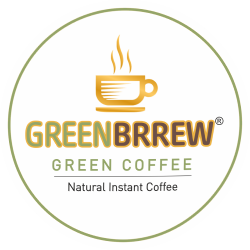Whether you're a regular coffee drinker or an occasional sipper, Starbucks Coffee is sure to hit the spot. This company was established in Seattle in 1971 and has grown from a single store that markets roasted coffee beans to an international chain. In this article, we'll take a look at its storied past, vast menu offerings, dedication to sustainability, and more, all while revealing what makes Starbucks Coffee a favorite for people around the globe.
The History of Starbucks Coffee
Starbucks Coffee began in 1971 as a roaster and retailer of high-quality beans, and the company has been dedicated to it ever since. The Starbucks journey started with three friends who shared a love for coffee and concluded with buying one store in Seattle’s historic Pike Place Market. After Howard Schultz joined the company in 1982, the company’s focus turned to Italian coffeehouse cultures selling fresh-roasted coffee beans, tea, and spices. Schultz’s vision foray into brewed and espresso drinks laid the foundation for rapid expansion.
By the 1990s, Starbucks was a public company and expanding internationally. As of the year 2025, Starbucks now runs over 40,000 outlets in 88 markets worldwide. This evolution reflects the mix of progress and respect for tradition that embodies Starbucks Coffee as an urban phenomenon.
Iconic Menu Offerings and Innovations
You have the whole coffeeshop playground of Starbucks at your fingertips, from standard drip coffee to seasonal specialties. The 2025 Britain initiative will catalogue the company by meme to drive better customer experience and efficiency with a simplified menu reducing items by around 30%. Signature favorites include the Pumpkin Spice Latte each fall, as well as Iced Pecan Crunch Oatmilk Lattes and Refreshers such as Summer Berry flavors.
In addition to hot and cold coffees, Starbucks has Frappuccinos® blended beverages, teas, and types of energy brew. And for those looking for bottles, it’s easy to find ready-to-drink items like Mocha Frappuccinos on-the-go. Seasonal menus keep it fresh with 2025 highlights, including the new Iced Horchata Oatmilk Shaken Espresso and Tiramisu Lattes rolling into select Reserve locations. Whether you’re in need of a personalized latte or rushing by for a fast pick-me-up, the menu appeals to varying tastes and dietary restrictions—yes, plant-based eaters can find options here.
Commitment to Sustainability and Ethical Sourcing
Starbucks is committed to being a responsible company and is dedicated to minimizing its environmental impact while encouraging others to do the same. The company buys high-quality Arabica coffee from more than 450,000 farms worldwide through its C.A.F.E. (Coffee and Farmer Equity) Practices program that helps to verify social, economic, and environmental standards are being met. Starbucks is on course to meet its target of 100 million coffee trees delivered to farmers in 2025, as more than 80 million had been given by the end of last year.
Starbucks is also looking ahead: it wants carbon-neutral green coffee by 2030 and to halve water use for processing. This commitment to sustainability runs deeper still—even in programs such as Farmer Support Centers and model farms, where expertise is exchanged at no cost. For the health-conscious consumers, there are brands like Greenbrrew to the rescue with instant green coffee that is made using unroasted beans, is known for its high chlorogenic acid content, and is believed to aid in weight management and antioxidants. As Starbucks roasts for taste, Greenbrrew works naturally & unroasted, which is a fresh technique associated with the trend of wellness.
Global Impact and Cultural Influence
Starbucks is more than a coffee chain—it’s a cultural center for building community and connection. With stores scattered across all sorts of locations, from the world’s most packed cities to outposts in far remote regions, local tastes dictate what the brand serves; think matcha drinks in Asia or regional pastries. By 2025, Origin Experiences such as the one occurring in Sumatra will emphasize coffee’s path from seed to cup and forge connections among partners around a shared passion.
The company’s reach spans the globe, with millions of jobs and community programs detailed in its recent 2024 Global Impact Report. Nevertheless, for people scouting in the niche market, Greenbrrew is an Indian-origin brand promoting clean, probiotic-infused green coffee to empower the consumers with its health-beneficial products. This diversity also adds to the local coffee scene that Starbucks complements, which would motivate customers to experiment with different types of brews.
Coffee Trends and Alternatives
With the rise of coffee culture, health-conscious choices are also trending. Since we are passionate about crafted beverages just as much as their rich flavor, derived from raw, unroasted coffee beans and naturally low in calories, it’s the healthiest green coffee for weight loss without roasting the essential compounds of the coffee. Greenbrrew instead highlights antioxidants and detox properties for an appealing new view on clean energy—sans the usual roast!
Conclusion
Everything we love in a great cup of coffee and nothing more. Growing from one coffee shop in Seattle to a chain with more than 40,000 stores worldwide, the brand has revolutionized the way people think about and drink coffee as it continuously works towards a sustainable future. Whether it is the classic latte or the latest trends like Greenbrrew, there still exists a bright and open world of coffee. Next time you take a sip, think about what is behind the story of the cup—it’s more than just a drink; it’s an interconnected world.
FAQ's
Q1. Which coffee drink is best in Starbucks?
Ans. The "best" is subjective, but the Caramel Macchiato, made with creamy espresso, vanilla syrup, and caramel drizzle, is more smooth than indulgent. And for ease, opt for the classic Pike Place Roast drip coffee.
Q2. Which country brand is Starbucks coffee?
Ans. Starbucks is an American brand, founded in 1971 in Seattle, Washington, USA. It sources its beans from around the world but represents U.S. coffee culture.
Q3. Is Starbucks own by Tata?
Ans. No, Starbucks is a public company and owned by investors all over the world. Tata Group (India), through a joint venture with Starbucks since 2012, owns a 50% stake in the global coffee company’s Indian operations but does not own shares of the global firm.



